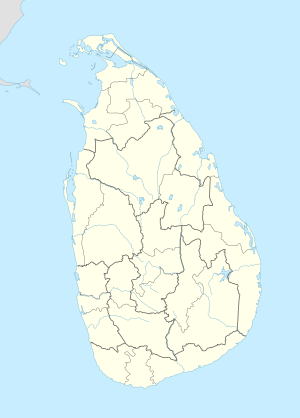| Mapagala fortress | |
|---|---|
| Part of Matale District | |
| Sigiriya, Sri Lanka | |
| Coordinates | 7°57′04″N 80°45′28″E / 7.951248°N 80.757718°E |
| Type | Defence fort |
| Site information | |
| Condition | Remnant |
| Site history | |
| Built by | Anuradhapura Kingdom |
Mapagala fortress was an ancient fortified complex of the Anuradhapura Kingdom long before Kasyapa I built his city, Sigiriya. It is located to the South of Sigiriya and closer to Sigiriya tank.[1]
It was built by using unshaped boulders to about 20 ft high. Each stone is broad and thick and some of them are about 10 ft high and about 4 ft long. It is believed that it was built before the time of usage of metal tools.[2] Arthur Maurice Hocart noted that cyclopean style stone walls were used for the fortress, and square hammered stones were used for the ramparts of the citadel. However, his note suggests metal (iron) tools were used for construction. Excavations work in this areas found a few stone forges, which proved Hocart's claim on the usage of metal tools.[3]
References
- ^ "Ancient city of Sigiriya ("The Lion Rock")". Archived from the original on 13 June 2009. Retrieved 24 November 2014.
- ^ "Remarks on Metal Intcriirtions". Archived from the original on 3 March 2016. Retrieved 24 November 2014.
- ^ "Exploring the Sigiri-bim". Daily News. Retrieved 24 November 2014.
Further reading
- Cooray, Nilan (2012). The Sigiriya Royal Gardens: Analysis of the Landscape Architectonic Composition. TU Delft.



